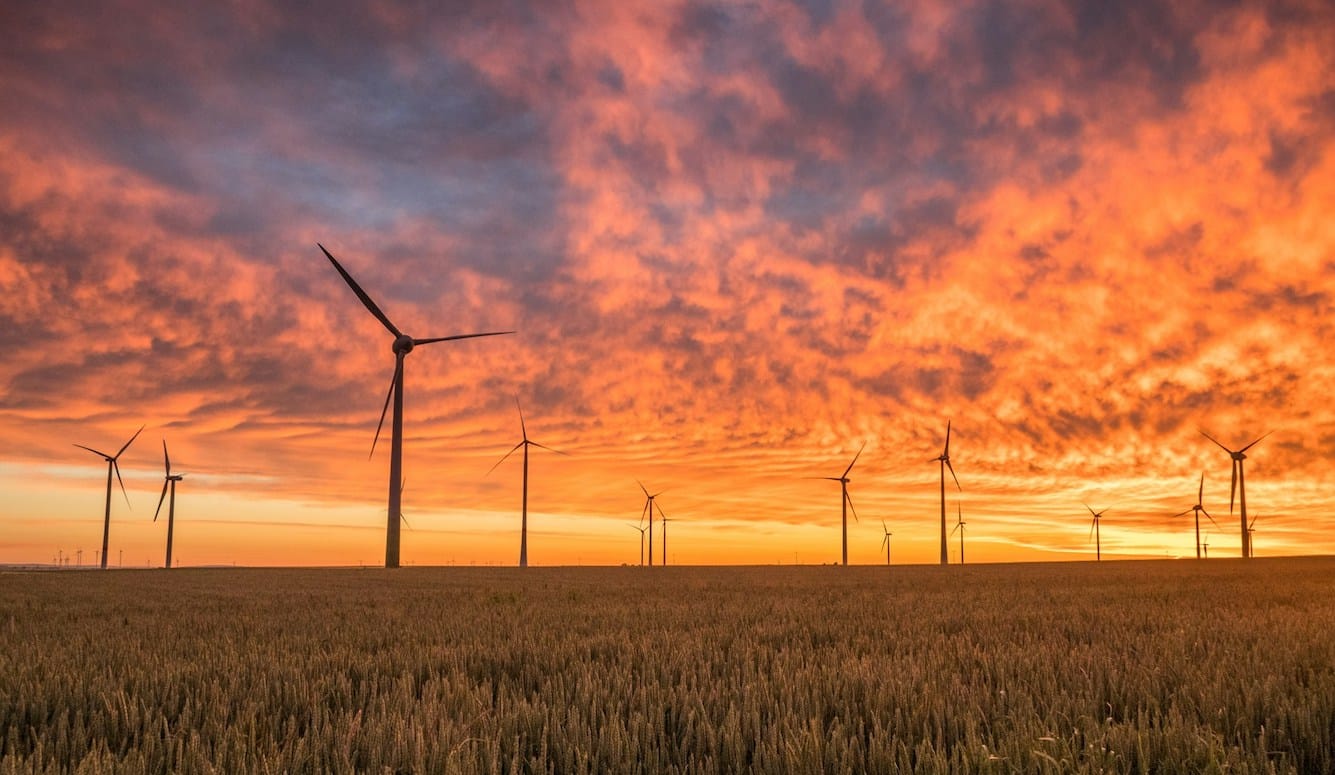Podcast
Podcast #285: The Green Delusion
Iona Italia talks to engineer Paul Brown about the hidden costs of renewables and the skewed incentives that are driving some countries towards unsustainable energy policies.

Introduction: I’m your host this week, Iona Italia, and my guest is Paul Brown. Paul is an engineer who has worked in various different disciplines—mechanical, drilling, manufacturing, and now building software systems for engineering businesses. His main interest is in understanding how things work at a fundamental level, maximising efficiency, and getting the most out of available resources. In a recent article for Quillette, he argues that “the current approach to energy and environmental policy isn’t just unsustainable—it has put us on a collision course with reality.” We discuss the hidden costs of renewables, net zero, and the energy transition and the skewed political and economic incentives that are driving many countries towards unsustainable energy policies.

Iona Italia: I think I’ll begin here, which is that, in most of the Western nations and most extremely of all in Australia, there is this perception that we can fairly easily and quickly shift our energy production from fossil fuels to nuclear and renewables. I don’t want to talk about nuclear too much on this particular episode because I recently had an episode on nuclear power in general and I’m about to have one on nuclear power in Australia specifically. But there’s certainly an assumption that a large part of the energy that we are now getting from fossil fuels we will be able to, within the near future, in the very short term, obtain from renewable sources and that it’s a sensible thing to do to try to subsidise and legislate and basically force people to switch from fossil fuels to renewables. I think this is an extremely foolish and unrealistic approach and I know that you share some of that view.
Can you talk a little bit about what are the fundamental challenges that would make it difficult to switch over? Maybe start with a specific one like solar, if you’d like.
Paul Brown: So, in terms of the actual viability of implementing these renewables, my issue is not necessarily the viability, it’s with the fact that the implementation of all these policies is always prefaced with the idea that it’s because of the environment, it’s all about environmental concern. And I just think that’s absolute nonsense.
There are lots of other reasons as well that I think that’s nonsense. But in terms of environmental concern, you look at solar and the main thing about solar … maybe people don’t really accept … or they think people like me are being arrogant when we say that there’s limits to what these technologies can do. You look at something like solar and there’s just this disconnect. People think that because solar has improved massively in last few years that it’s going to keep on in that sort of trajectory and you’re soon going to have … it’s just going to able to power everything with small solar panels.
But the issue of solar is that the amount of energy from the sun is finite, it’s constant, it’s so constant that the scientific term is the solar constant. So the amount of energy that you get per the area of the land on Earth is constant and it’s not a massive amount. I’m not going to go into numbers or anything and I’m just talking in general terms: 500 watts per square metre. A car needs 70,000 watts—so that’s 140 square metres to power a car. There’s this idea that somehow you can get some sort of fancy paint on your car and then your car will be self-driving. So you’ve got these limits, you’ve got this massive area to power a car and then these other limits like: that’s only when the sun shines and it’s only when there’s no clouds and it’s also assuming 100 percent conversion efficiency from solar into electricity. And in reality, the conversion efficiency is only twenty percent. The rest is going to be lost by heat.
So the area of solar power you need is massive. It’s absolutely gigantic and that isn’t changing because it’s tied to the amount of energy you get from the sun. And that’s only one part of the story. When people say that solar panels are now the cheapest form of grid electricity—and you see this—it will take you ten seconds in Google to find claims that it’s percent of the cost of gas-generated electricity. I just think it’s totally dishonest because what they’re doing is they’re taking the cost of the solar panels and the amount of energy generated and they’re saying right that’s the cost of these solar panels. But the supply of energy you get from solar panels is intermittent and it doesn’t synchronise with demand, so you need a place to store that solar energy when you’ve got excess energy and you need a buffer when you’ve got too much demand and not enough supply. So you need a storage facility. There’s a cost associated with that. And there’s an environmental impact associated with that, that’s a battery or a hydroelectric facility.
And so all of a sudden, your system’s got a bit bigger and more expensive and [has] more environmental impact. And then you have to take into account that this is a fundamental law of physics: you cannot convert energy from one form into another without losses. And so you pump this electricity from your solar panels into this power storage place and you start using that electricity and you’re only getting like seventy, eighty percent back out.
So then you have to overbuild capacity again. So you started off with 1,000 solar panels. Now you need 1,000 solar panels plus a storage facility plus an extra 300 solar panels. And then your solar panels are only producing at maximum rate at say thirty percent of the time. So you need to overbuild that again. And we’re not even taking into account the finite lifespan of solar or the geopolitical concerns, dependence on China, any of these things.
There’s a dishonesty in terms of the price. When you take that fifty percent cost and you implement all these different things, the overbuilding just to make up for the losses in storage, the cost is actually two to three times the price of what you’re actually stating it is. So what’s the environmental cost? What are the other costs that people have been dishonest about? I guess that’s a good starting point for what my objections to these sorts of things are.
II: Yeah, I noticed with solar as well that people are subsidised to install solar panels on their roofs. And that does work very well for the individual person in Australia, or most of the time, although even here in Australia, the sun doesn’t shine at night. But it is pretty sunny here. But nevertheless, that means that only those people who can afford to own a property, which is a quite small proportion of people here, can afford to also install those solar panels because it’s quite a large cost even though you’re being subsidised. Those people installing the panels are being paid by the government to do so. And of course that government money is coming out of other people’s taxes.
It’s an unseen energy cost that people don’t realise is part of their energy bill because it’s not in the little thing that says this is how much your electricity costs are for this month. Poorer people are subsidising wealthier people’s solar panels, which is extraordinary really.
PB: I think it’s mad and it’s the same thing here. And in the UK, energy costs are rising and rising and rising. We now have the highest energy costs, I think, in the developed world. And this is concurrent with pushing all these renewables and installing these renewables and shutting down our existing energy infrastructure. But the two are never correlated. Nobody ever says that the energy costs are caused by the renewables.
And to speak to your point about the solar panels on the roofs. It sounds like a good idea putting solar panels on a roof—of course, that’s what you’d want to do. But when you put solar panels on a roof, the angle of that roof isn’t optimised, it’s not going to get the most energy that it can because the house is built a certain way. It’s not the same as building these things in the desert where you can just angle them in the best direction towards the sun.
So to get the same capacity from rooftops, you need a lot more solar panels because you’re not getting the same energy per solar panel. So then you have to overbuild capacity more, which makes it more expensive, which means that the subsidies are even more inefficient. Those subsidies are better off being spent on solar panels in the desert. But for some reason … it’s another one of these aspects of all this that doesn’t quite make sense, it doesn’t get people to buy into this idea. What they’re trying to do, all these countries … energy is so fundamental and they’re wanting to change how energy is generated and how it’s consumed, the way the power is generated and [push] electric cars and all that.
But in order to do that, you need to get people’s buy-in and by subsidising some people inefficiently and taking those costs from poorer people and being dishonest about all these things, you’re not getting people to buy into this. And if you are truly wanting to optimise for environmental impact, then surely you must realise that you need to get people to buy into this. But they just don’t bother.
II: Yeah, I feel if it’s really such an efficient source of energy, a cheaper and more efficient source of energy, then people would opt for that without needing to be subsidised. Why do those industries need to be subsidised if that is such an efficient way of generating energy? That also makes no sense to me.
PB: Yeah, absolutely. I totally agree. And so you see these claims—and you see them all the time—about the cost structure. Solar is so cheap and it’s so good and all this sort of thing. If the costs truly were cheaper than normal electricity sources or they truly were better, then you would see natural inflows of money and investment into these solar things. You wouldn’t need to subsidise them because if you can generate electricity for cheaper or if you’re in the trajectory to generate electricity for cheaper than you can currently generate it for, then you’re going to make an awful lot more profit from that electricity generated than you are on existing infrastructure. So the money would just flow naturally and the money would flow out of the oil industry and out of the gas industry but you’re not seeing that, that’s just not happening.
II: Yeah, it’s doubly crazy here in Australia, because the argument is [that] solar and wind are cheaper than nuclear. We don’t really have hydropower except down in Tasmania, because we don’t have a lot of rivers flowing down from high mountains here. Solar and wind are supposedly cheaper and more efficient than nuclear and than fossil fuels and therefore we need to subsidise solar and wind and outlaw nuclear. That just that reeks of a planned economy to me. It doesn’t sound like a product that’s actually more efficient and profitable and cheaper. If it really were cheaper, you wouldn’t need to subsidise and people would opt for it. If it kept their energy bills down, they would opt for it.
PB: Absolutely I think everything points to this being planned. There’s an awful lot of people making an awful lot of money and I think that’s what this boils down to.






